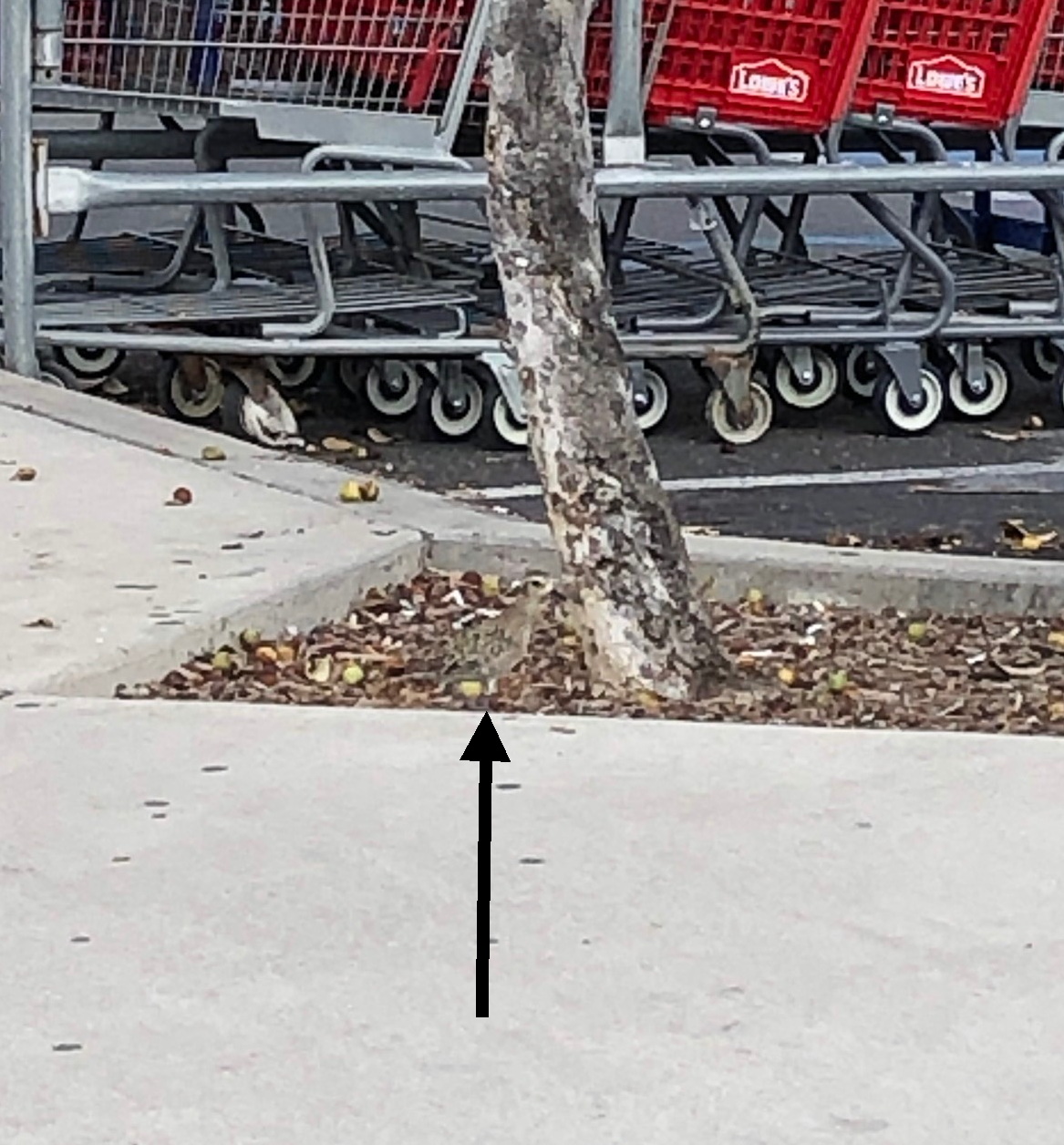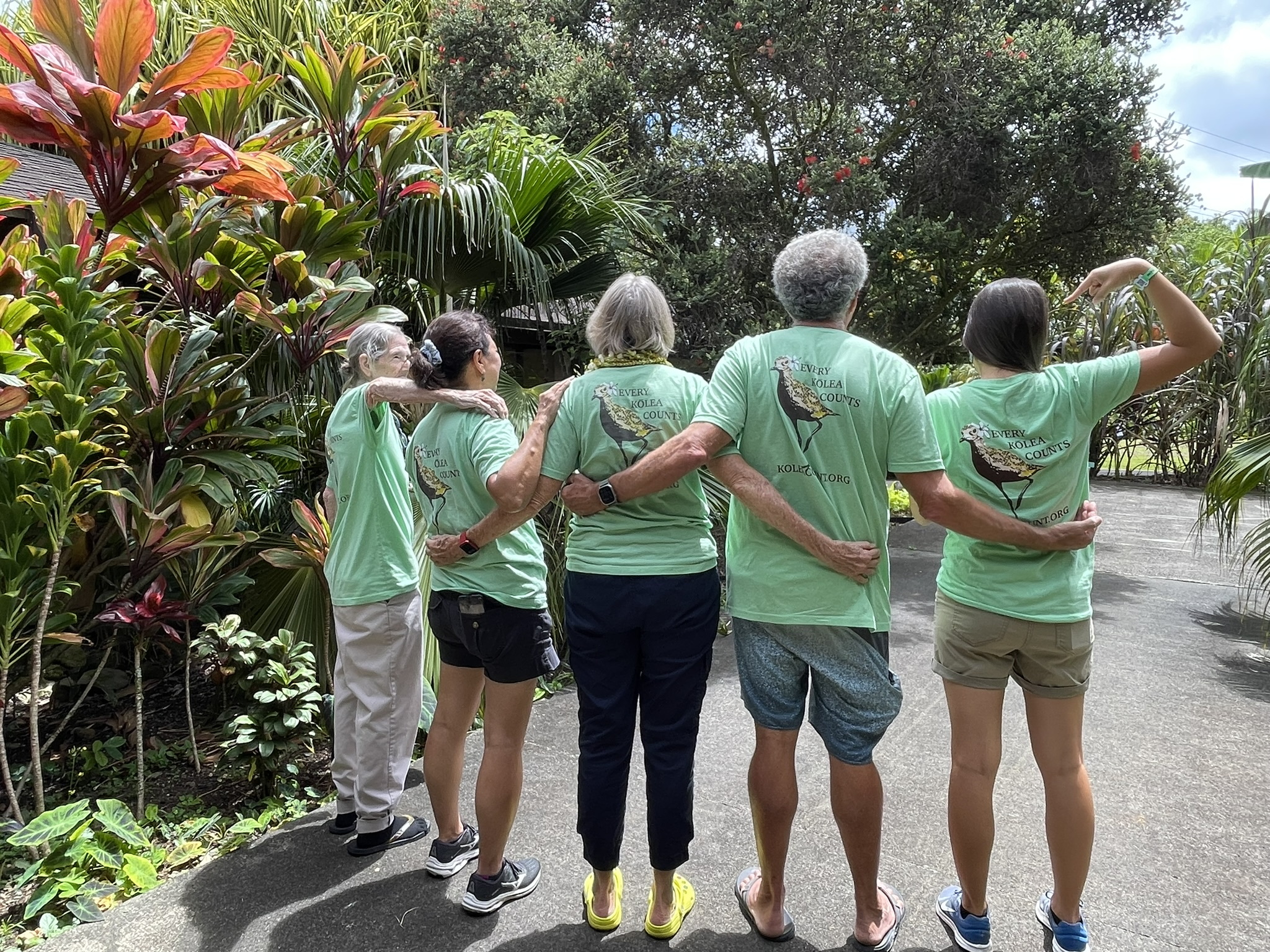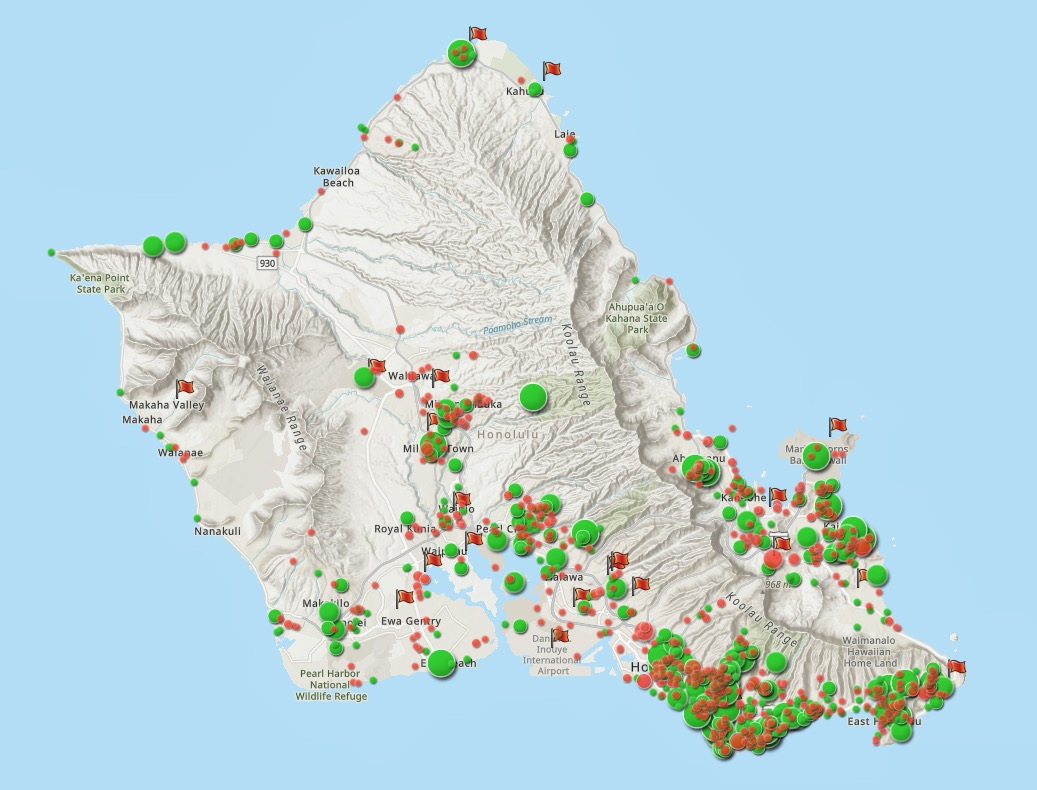
Puuiki Cemetery, Waialua September 2, 2024. ©Susan Scott
September 19, 2024
Once again, kōlea are generating joy in Hawaii by another extraordinary achievement: They came back.
One Hana resident’s bird returned on September 1 for the 15th year. With the arrival report, the Maui homeowner wrote. “This kōlea has been arriving on my lawn every September since 2009.”
People often ask what they can do to attract a plover to their yard. The answer is: nothing. The birds choose their own foraging sites, sometimes passing on what looks like perfect territory, and other times picking spots that look dubious, at best.

A Lowe’s parking lot kōlea. Elton Miyagawa photo.
Here’s a September 12th arrival note from a Kaaawa resident: “First time a kōlea has ever come to my yard. I’ve lived here for 43 years and have a large grassy yard. Finally!”
The birds will continue arriving from Alaska to Hawaii for another month or two, depending on Arctic weather.
On December 1st, we’ll start counting individuals for the 2024-2025 season. Please let me know in the CONTACT tab above where you like to count, and I’ll add your X to the location list.
You can’t do this wrong. Besides collecting data, part of this project’s aim is to encourage people to notice, and enjoy, these extraordinary shorebirds.

Hawaii Audubon Society members show off their kōlea fandom at Hoʻomaluhia Botanical Garden on September 6. Memberships and Ts, available at Hawaii Audubon.org, help support research and education.
We are currently analyzing data that kōlea watchers helped collect. I write “we” but the statistical wizardry that’s underway is the work of Hawaii Audubon Society’s board member, Rich Downs. Rich, who wears multiple hats (most feathered), combined Kōlea Count reports with eBird observations.
Rich and I are exploring ways of displaying and sharing this wealth of information. Below are two examples of Rich’s layered maps using ArcGIS Online. Various colored dots representing various counts can be displayed separately or together on maps. Due to space limits, these show Oahu only but maps zoom in and out to include all the main islands. Putting your cursor on a dot pops up details, including date, location and comments. Stand by for graphic reports and links.

Flags show golf courses, ideal habitat for our kōlea but currently far under-counted. Green dots are kōlea locations reported in 2023-2024 season. Orange dots are plovers reported in previous years but not 2023-2024. Dot sizes reflect number of years reported. Rich Downs image.

Kōlea Count and eBird data layered over a Hawaii Land Cover map. Rich Downs image.
Since July 1 of this year, kōlea watchers have made 362 Arrival Date entries on this site for a total of 1,351 birds. That’s not entirely accurate because as I write, reports are coming in. Thank you, kōlea fans, for reporting your birds, and in that, helping us learn more about them. And thank you, dear kōlea, for choosing us.